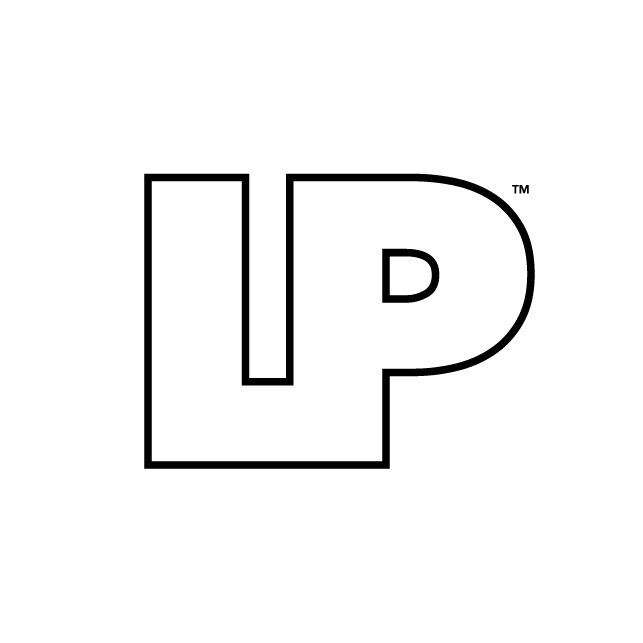Is content marketing worth your time and effort?
Well, it might be worth listening to what the most experienced marketers say. When asked, 96% said that content marketing positively impacted their brand and business.
But to succeed with content, you need a plan of action and some content marketing tips to master your next campaign.
To help you do that, we’ve compiled this comprehensive guide to share our top recommendations for structuring your content marketing campaign in 2022 and beyond.
What is a Content Marketing Campaign?
When you have a website, you can wait for customers to discover you or actively seek them.
Content marketing helps you do the latter. You can use content (videos, podcasts, blog posts, galleries, or infographics) to attract your target audience to your website.
A content marketing strategy is a planned set of actions from start to finish with a specific content marketing goal. For example, you might create a campaign to double your traffic for November.
You can run as many content marketing campaigns as you like for your website, and you can run more than one simultaneously if you prefer.
Structuring the Perfect Campaign
Since a content marketing campaign has a distinct start and end, you should consider planning it like a business project.
Here is a step-by-step process to follow when putting together your campaign and some content marketing tips for each stage.
Start With a Goal
Content marketing can do a lot of things for your business. It can bring you traffic, leads, or brand recognition. But that’s a broad area, and a good content marketing campaign needs to be a bit more specific than that.
So your first job is to set a marketing goal for your campaign that aligns with your high-level business strategy. What are your goals for the next 12 months, and how will your online presence support that?
- Do you want more sales?
- Do you intend to launch a new product?
- Do you need better brand awareness in your niche?
- Do you need more customer leads?
- Do you need more website traffic?
Going through these questions will help you settle on a goal. But you will also need to go one step further. You’ll need to make sure your goal is measurable so that you can look back on it in 12 months and see how effective your campaign was.
Don’t forget to put timescales on your campaign goal too. That will help when planning, as you can work back from that date to set a deadline for all your interim tasks.
Define a Target Audience
Once you know your campaign goal, it’s time to start thinking about your audience. The more you can narrow down your target, the easier it will be to create content that resonates with an audience.
You’ll probably need to do some research at this stage. If you have existing customers, you could contact them with a survey to help you profile a target audience.
If you don’t have customers, there are plenty of forums and social media spaces to explore to discover who your perfect customer is and what they want from you.
When writing your customer profile, try and go beyond identifying basic demographics.
Consider, too, their needs, demands, and interest. It will help you develop a more refined profile that will provide essential clues about the type of content that’s likely to work well.
Research Your Content
Once you know who you will target and why you want to target them, it’s time to start delving into the detail. The first step is to do some preliminary research on content. There are three avenues to explore: keywords, competitors, and current content.
Keywords
You want to produce content that’s relevant to your business but is also in demand. The best place to start here is by doing some keyword research.
Use an SEO tool or Google’s free keyword planner to build a list of topics, keywords, and phrases.
You want to focus on anything that shows an upward trend in searches, which probably demonstrates the potential to do well in a content campaign.
It’s also worth looking at the articles and videos that currently get many social media shares. That will provide more clues to the content that might perform well for your business.
Competitors
Analyzing what your competitors are doing well can be an intelligent way to get potential content ideas for your campaign.
Most SEO tools, for example, will give you information on what pages and content perform well for your competitors.
You can also research by heading to Google and seeing what content ranks best for your key competitors. Look in depth at the article pages for information on the ones that get the most social media shares.
Current Content
You can also shape your content campaigns by seeing what’s worked well for you in the past. So carry out an audit of your existing content to see which had the most significant impact on your audience.
This phase is also an opportunity to spot gaps. Perhaps there is a topic valuable to your audience that you haven’t previously covered.
Choose Your Channels
The next step on your journey to a successful content marketing campaign is deciding what channels you’ll use to share your content and attract your audience. Here are some ideas:
- Organic search
- Paid search
- Social media
- PPC advertising
- Public relations
- Mobile advertising
- Banner advertising
You can choose one or many of these channels. You might have one that’s brought you excellent results in the past, or perhaps you want to select a new medium because you know it’s popular with your audience.
If you choose more than one, think carefully about the format for your content. You might want to reformat your content to work across different channels.
For example, a lengthy how-to video might be great for YouTube. Still, you will need to produce a short snappy reel if running the same content on Instagram.
Write Your Campaign Plan and Budget
At this point in your campaign, you should have a good idea of your goal and the type of content you’ll produce. So you have enough information to begin creating your high-level plan and budget.
What resources will you need? For example, if you intend to run ads, do you want to hire an agency like ours to help you with that ad campaign?
Planning means you’ll give yourself enough time to secure the right resources and funding before publishing your content.
Plan Your Content
Now it’s time to start planning your content, using your research and your decisions on format and channels.
A good campaign is coherent, so begin your content planning with one high-level idea on branding and message.
Once you have this, you can start to put together a list of individual content pieces for your campaign that will fit your overall vision.
In a small and relatively straightforward campaign, this could be something as simple as a list of new blog posts for your website to boost traffic numbers. But your campaign could be more involved than this.
For example, you could run a series of blog posts, videos, and social media posts to create a buzz before an upcoming product launch.
What’s important at this stage is making sure the content fits what your audience needs and helps you meet your high-level goals.
Another idea you might want to try is to create different ideas for the promotional assets you’ll use during your campaign, such as ad images or call to action.
Having multiple ideas means that if something isn’t working, you can quickly test a different idea on your audience.
At this stage, you also need to start putting down a name against each content item to ensure everything has an owner, even if it’s a group project.
Nevertheless, you also have to be realistic about what content you can produce in your given timeframe and with a given budget and resources.
You don’t want to find yourself behind schedule and discover you don’t have time to produce that all-important YouTube video that was the signature content for your campaign!
If you’ve ambitious deadlines, you might want to get support from an external agency like ours to help you hit your content goals.
Create Your Content Calendar
You may have a high-level plan, but writing a content calendar is critical to a successful campaign.
The difference with a content calendar is that it will allow you to set a specific release date for each content item, including the title, description, format, and channels you’ll share that content.
So unlike a high-level plan, it’s a working document, helping you see what you need to do daily to hit your content goals.
One thing you should do when putting together this calendar is examine any external dates that could impact when you release your content.
For example, if you want to run a sale in the latter half of the year, you probably want to tie it in with Black Friday. Producing content about a deal a week after Black Friday might not have the same impact on your audience.
A content calendar will be handy if you use a social media scheduling tool. It will give you all the dates for when to schedule the publication of your content.
You should also consider when and if you re-post content on social media to gain more traction. The same goes for any ads.
Set Up Your Analytics
Is your campaign as successful as you expected? To answer that question, you’ll need the proper monitoring in place. So before you publish your first item of content, ensure you have analytics tools with any vital reporting.
The first place to start is Google Analytics. If you have a website, you probably already have Google Analytics set up on your website.
And this tool will be essential for your content marketing campaign as it will tell you how all your content performs on your website. It will also give you helpful insights into traffic referrals from third parties like ads, search result pages, and social media.
But depending on your channels, you might also need additional analytic tools. For example, if you intend to use email as part of your content marketing campaign, ensure you have analytics on your email autoresponder.
Likewise, you might want to invest in analytics tools for your social media platforms. Most platforms provide basic analytics. Depending on your campaign, you might need more detailed metrics.
If you’re unsure about metrics and tools, contact our team. Our experienced marketers can offer our professional advice.
Publish, Track, Report, and Review Your Campaign
The last step of your content marketing campaign is to publish your content. But this isn’t a signal for you to tick everything off your task list and move on to your next priority! There are essential things to do once your campaign is live.
Firstly, you’ll want to track the performance of your campaign using the analytics tools you have in place. You should set up custom reporting to help you track the key metrics that matter to you. Those metrics will depend on your goals.
Secondly, you’ll want to schedule time as a team to review these reports during the campaign so you can tweak things if necessary. Depending on the campaign length, you might prefer to do that daily or weekly.
Lastly, don’t forget to review the campaign after it’s finished. Whether it’s successful or not, there will always be valuable lessons you can learn and ways to improve your strategy next time.
Content Marketing Tips for Your Next Campaign
Whatever your business ambitions, there is a content marketing campaign to match. Use these content marketing tips to ace your next campaign.
We have a fantastic track record of results for businesses like yours seeking to boost their marketing efforts in 2022 and beyond. To find out how we can help you, contact us today.









